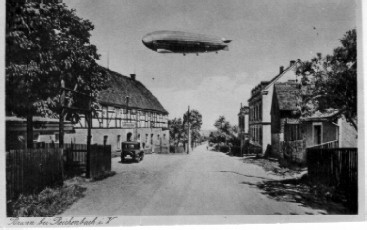|
|
|
|
|
In 1901, people started to experiment with making balloons actually fly in the direction they wanted. They wanted to steer, rather than drift with the wind. This was the start of the dirigible, or blimp, or airship. The most famous of all were the zeppelins, named after their German inventor. They were over 60metres long, and could travel as fast as a car travels today. |
|
Inside the zeppelin it was much quieter, and nicer than in a modern plane. You had cabins to sleep in, and big dining rooms, and you could walk up and down and look out the windows like these people. For a long trip, you might be on the air ship for several days. |
|
|
|
The passengers were in a special compartment that hung from the bottom of the huge balloon. The balloon part had metal struts to hold it in shape. This is a photo of what the inside looked like. It was filled with hydrogen gas, which burns. Today any airships around are filled with helium gas, which doesn't. |
|
People travelled in airships like this zeppelin seen over a village street, mainly in the 1910 to 1930's period. After that, more travel was in heavier than air craft, like the airplanes we know today. A zeppelin was a lighter than air craft. |
|
|
|
The most well known of all zeppelin airships was the Hindenburg. It hit the tall tower it was supposed to tie up to, and caught fire. Many people were killed as it burned and fell to the ground, but mostly they were killed by falling or jumping to the ground, not burning. But it made people rather nervous about travelling in zeppelins. |
|
This kind of air travel was quite different from air travel today. It was slow, quiet and comfortable. Only very rich people could travel like this. Read this page from a brochure advertising a zeppelin flight. It was written in the 1930's - over 70 years ago. Would you have liked travelling like this? |
|




